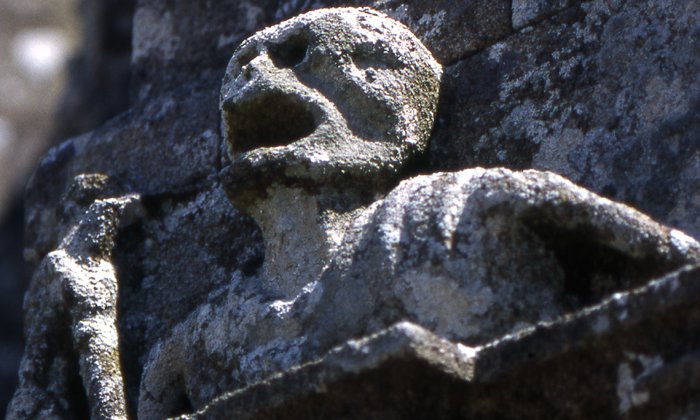A. Sutherland – AncientPages.com – In Brittany’s fairy folklore, there is a frightening spirit, Ankou (“death”). Ankou is the personification of Death and a soul harvester. He is the Angel of Death and Death’s servant.

Image credit: Ifernyen – CC BY-SA 3.0
Ankou is portrayed as an exhausted skeletal figure with flowing white hair. His head can turn at a 360-degree angle to symbolize his ability to see everywhere, everything. Ancient tales vary on the details of Ankou’s idenтιтy.
One version of the tale says that Ankou is headless; yet another describes this mysterious figure with two skeleton ᴀssistants who help Ankou collect the souls of the ᴅᴇᴀᴅ. His job for the next year is to guide the ᴅᴇᴀᴅ souls away from their bodies. Ankou, who never misses a day, travels the countryside using only one particular path, and he usually appears at dusk with a scythe fitted upside down.
“In the Breton folklore tradition, Ankou (“reaper of the ᴅᴇᴀᴅ”) is the personification of Death; it is described as looking like a tall, thin, white-haired person carrying a scythe, wearing a felt hat, and dressed in either black clothing or a shroud. Sometimes, he is said to look like a skeleton.

Ankou, depicted on a carving at the ossuary of the chapel of St Joseph at Ploudiry, Brittany; Image credit: – CC BY-SA 3.0
Ankou’s head can rotate three-hundred-sixty degrees; he drives a karrigell an Ankou (“carriage of Ankou”) pulled by skeletal horses and has a servant called ‘mevel an Ankou.’
In some parts of Brittany, it is believed the last person who died in the previous year is the current year’s Ankou. Ankou is said to travel the countryside collecting the souls of the ᴅᴇᴀᴅ and dying, although there needs to be more clarity over what he does with the souls once he has them.
Some tales say he delivers them to Anaon, the king of the Underworld, takes them across the sea, or delivers them to face their Final Judgment.” 1
 The Ankou of the ossuary of La Roche-Maurice (1639-1940). Image credit: GO69 – CC BY-SA 3.0
The Ankou of the ossuary of La Roche-Maurice (1639-1940). Image credit: GO69 – CC BY-SA 3.0
The tale about Ankou is ancient, and this ominous figure was present for a long time, especially in Breton literature. The Celtic Britons, who had a strong sense of the nearness of Death, did not fear it because, in their beliefs, Death represented the beginning of a better life, a miraculous journey to a place where no fear, sorrow, pain, and loneliness could ever hurt them again.
However, they were always afraid of Ankou, which means grief and oblivion, and he is forever doomed to fulfill his task of collecting the souls of the ᴅᴇᴀᴅ and cannot ever leave it.
The spirit of Ankou is particularly active and influential on November Eve (October 31). The ancient people believed that Ankou was a personification of Death and that seeing him was a clear sign of a person’s Death.
Written by A. Sutherland – AncientPages.com Senior Staff Writer
Updated on January 14, 2024
Copyright © AncientPages.com All rights reserved. This material may not be published, broadcast, rewritten or redistributed in whole or part without the express written permission of AncientPages.com
Expand for references
References:
- Bane, T. Encyclopedia of Beasts and Monsters in Myth, Legend and Folklore
2. Williams Victoria R. Indigenous Peoples: An Encyclopedia of Culture, History, and Threats to Survival
T. Cheung, Celtic Angels: True stories of Irish Angel Blessings





